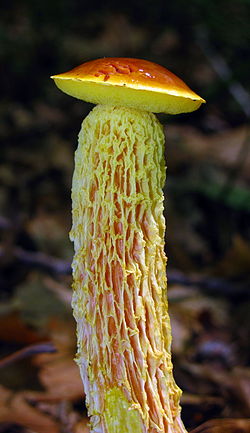| Aureoboletus betula | |
|---|---|
 | |
| Scientific classification | |
| Domain: | Eukaryota |
| Kingdom: | Fungi |
| Division: | Basidiomycota |
| Class: | Agaricomycetes |
| Order: | Boletales |
| Family: | Boletaceae |
| Genus: | Aureoboletus |
| Species: | A. betula |
| Binomial name | |
| Aureoboletus betula | |
| Synonyms | |
Boletus betula Schwein. (1822) Contents | |
| Aureoboletus betula | |
|---|---|
| Pores on hymenium | |
| Cap is convex | |
| Hymenium is adnate | |
| Stipe is bare | |
| Spore print is olive | |
| Ecology is mycorrhizal | |
| Edibility is edible | |
Aureoboletus betula is a species of mushroom producing fungus in the family Boletaceae. [1] It is commonly known as the shaggy-stalked bolete. [2]